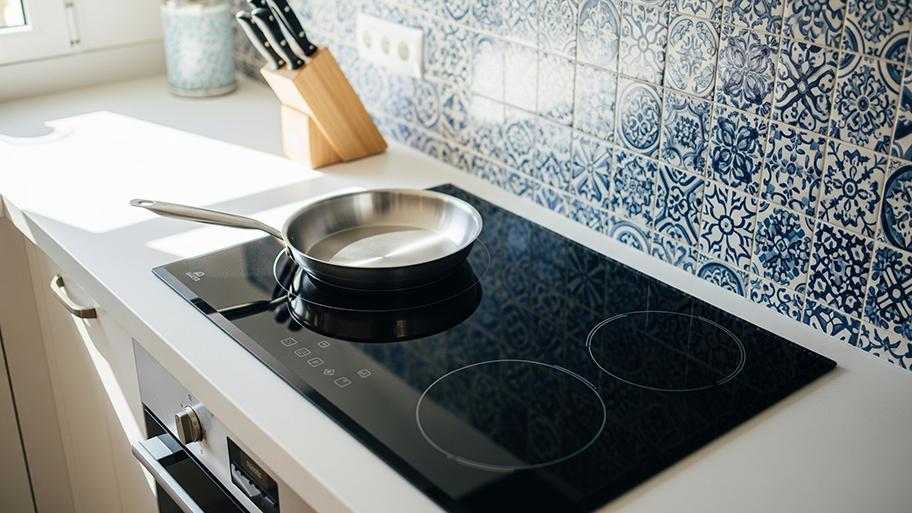
The cost to install a wall oven depends on several factors, including the type and size of the oven. Get our full wall oven installation cost breakdown.
Is your refrigerator running? Clean condenser coils can make it work even better


Whether you’re reaching for a chilled bottle of water or letting the meat for dinner slowly defrost, you depend on your refrigerator to keep things cold. Despite it being an integral part of your kitchen, you may not give much thought to all the parts that keep your fridge humming along. Your refrigerator coils, for instance, have to work pretty hard and frequently end up full of dust and grime.
Once those coils are dirty, your fridge goes into overdrive, and that can eventually lead to this trustworthy appliance breaking down, causing you to need fridge repairs sooner than you’d like. But don’t despair—there’s an easy solution that will take less than an hour of your time. Here’s how to clean your refrigerator coils.

Start by getting all your supplies and tools ready to go. Next, you’ll need to slide the refrigerator out (you may need assistance here). You’ll probably need to be able to access the back of the fridge, so make sure it’s a good distance away from any walls. You can find your condenser coils in a few spots. If you have an old refrigerator (10 years or older), the coils are probably going to be along the back of the fridge. Newer models often have their coils at the bottom of the refrigerator. If you have trouble locating them, check your owner's manual for help.
Once the tools are ready and you can easily reach the coils, it’s time to unplug the refrigerator. Because cleaning the coils doesn’t take too long, all the contents inside the fridge will stay cold as long as you leave the door closed.
Start by using the wand attachment to gently vacuum all the obvious dirt and dust off the coils and any debris hiding underneath the refrigerator. Next, place the large piece of cardboard on the floor where you are working. Now use the coil cleaning brush to get in between the coils and loosen additional dirt and particles, which will fall onto the cardboard.
If you need to pop off the grill to reach the coils, give that a once-over with the vacuum wand attachment before putting it back on the refrigerator.
If the vacuum didn't get all of the gunk, a baby wipe is a great way to pick up the remnants. They work well because they're damp, helping them pick up stubborn bits of dust. Tip: If you don't have any baby wipes handy, a damp cloth works, too.
If you're a perfectionist, then there's one more step. Use a paintbrush to reach those nooks and crannies you couldn't get to with the baby wipe or cloth. Optional addition: If a paintbrush isn't doing the trick alone, pair it with some canned air. Spray the air in any stubborn places and then brush away the loosened dust.

Once you’ve brushed away as much gunk as possible, clean up the supplies and surrounding area. It’s a good idea to keep all the tools together since you’ll need them when you tackle the refrigerator coils again in a few months. Finally, slide your refrigerator back into its spot and plug it in.
If you don’t have the necessary tools on hand or don’t have the time to tackle this project, consider calling a local house cleaning pro to take care of this and other cleaning tasks. Many house cleaners will offer this service as an add-on, ranging from $50 to $100, depending on where the coils are located and how dirty they are. Not only will this take the task off of your plate, but you’ll be assured the job is done correctly.
Dirty coils force your refrigerator to work much harder than it needs to, causing higher energy bills.
Taking the time to clean them about every six months helps keep your refrigerator running at optimal capacity, making your fridge more energy efficient and less likely to need repairs.
From average costs to expert advice, get all the answers you need to get your job done.

The cost to install a wall oven depends on several factors, including the type and size of the oven. Get our full wall oven installation cost breakdown.

Discover the average dishwasher installation cost, key price factors, and tips to save on your project. Get transparent, expert-backed estimates.

Broken glass stove tops are not only unsightly; they can also be dangerous. Use this guide to learn how much glass stove top replacements cost based on factors like size and type.

Knowing which types of dryer plugs you should use will help keep your home safe from a fire hazard. Here's what you need to know about 3-prong versus 4-prong dryer plugs.

Burnt popcorn or a candle gone wrong can smell pungent and overwhelming. Find out how to get these smoky smells out of your house for good.

Unsure who to hire to install your range hood? Learn about the different professionals to consider and find the right one for your project.